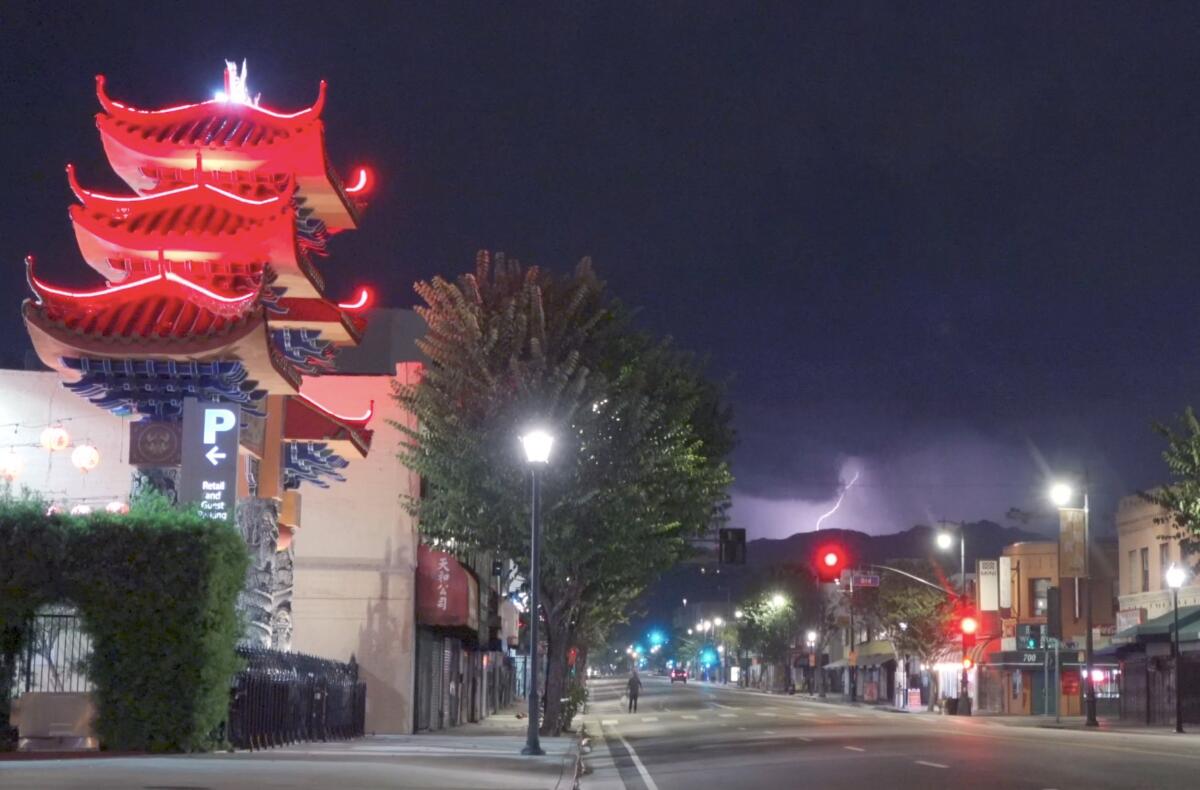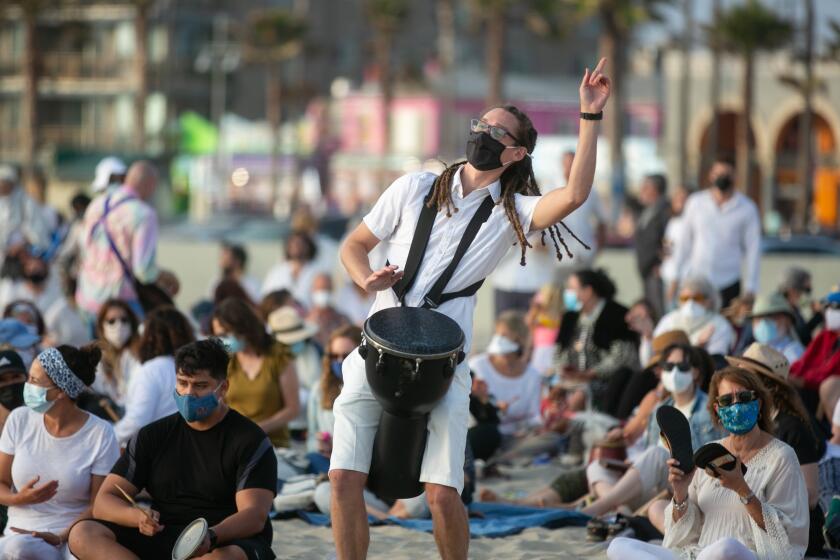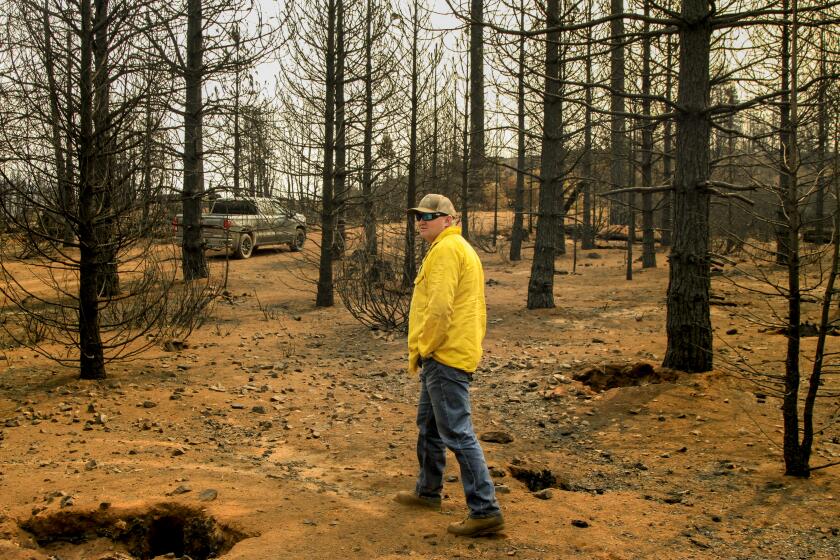Lightning, fire, flash floods: California gripped by extreme weather

- Share via
Amid a summer of ecological crises, California was gripped by yet another bout of extreme weather Thursday night and into Friday morning.
Severe lightning and thunderstorms blasted the Southern part of the state overnight, spurring shelter-in-place warnings for flash floods and reports of rockfalls and mudslides. And lightning storms in Northern California brought danger to already massive wildfires, as well as some new ignitions.
“We had a good storm go through the area,” said Adam Roser, a meteorologist with the National Weather Service in San Diego.
A narrow area of atmospheric instability and converging wind produced the band of thunderstorms that moved up from San Diego and through portions of Los Angeles on Thursday night, officials said. At its peak, it dumped half an inch of rain in 10 minutes over the burn area of the Bobcat fire — sparking flash flood warnings for residents in Monrovia and other nearby areas.
California — along with Idaho, Nevada, Oregon and Utah — recorded its hottest ever meteorological summer.
Roser said the system that powered through the region strayed from the typical monsoon path by moving away from the desert and occurring at night.
“For it to get into the valleys and the coast is pretty significant,” he said.
Heavy rain also wreaked havoc on mountain roads in the Inland Empire, forcing the closure of State Route 18 from Big Bear Dam to Snow Valley for several hours, according to the California Department of Transportation.
Reports of lightning and rain rang out as far south as San Diego, with some residents of the drought-riddled state appreciative for even the hint of precipitation.
“We are in a drought, and on fire, we need this,” one person wrote on Twitter.
“I’m happy somewhere, someone in California has gotten some rain,” wrote another.
The chance of isolated thunderstorms will remain in the L.A. basin, San Gabriel Mountains and eastern Antelope Valley through Friday, the weather service said.
A heat advisory for the Inland Empire and surrounding mountains has also been extended through Sunday, with the promise of temperatures as high as 104 degrees. A heat advisory is in place for portions of Los Angeles County through Friday.
After burning for nearly 60 days, the Dixie fire continues to exhibit active fire behavior, surging north as treacherous weather conditions move in.
Extreme weather also traveled to Northern California, where firefighters continue to battle the massive Dixie fire and the Caldor fire burning near South Lake Tahoe.
Dixie fire operations section chief Mike Wink said Thursday that crews were facing “very, very concerning conditions over the next day and a half,” and many of those fears came to fruition: Approximately 1,100 cloud-to-ground lightning strikes were recorded across the state since Thursday evening, officials said.
“We did see quite a bit of lightning with this system,” said Cory Mueller, a meteorologist with the National Weather Service in Sacramento, “which was fairly unfortunate, because despite seeing these rain totals which were not bad for September, they really weren’t enough to suppress lightning ignitions.”
Lightning, showers and wind gusts passed through the Tahoe Basin Thursday night, and firefighters were diverted away from the Caldor fire to fight multiple lightning fires throughout El Dorado County, officials with the California Department of Forestry and Fire Protection said.
At least one large fire, dubbed the Kanaka fire, grew to more than 10 acres before crews were able to stop its progress.
More than one hundred cloud-to-ground lightning strikes also hit the Bay Area — which was under a red-flag warning for high fire danger — including strikes in Santa Clara and Sonoma counties. Some small fires were reported in the region, officials said.
As for whether the wetness will make a dent in the state’s worsening water shortage, meteorologist Ryan Kittell with the National Weather Service in Oxnard said not to count on it: Most of the moisture should clear up by the weekend.
“Any little bit helps,” he said. “But it’s kind of a drop in the bucket for the drought.”
More to Read
Sign up for Essential California
The most important California stories and recommendations in your inbox every morning.
You may occasionally receive promotional content from the Los Angeles Times.













